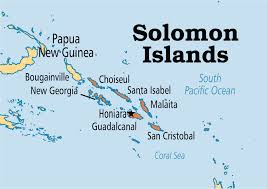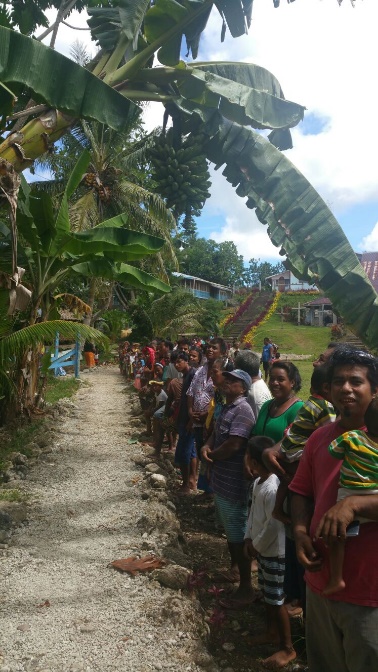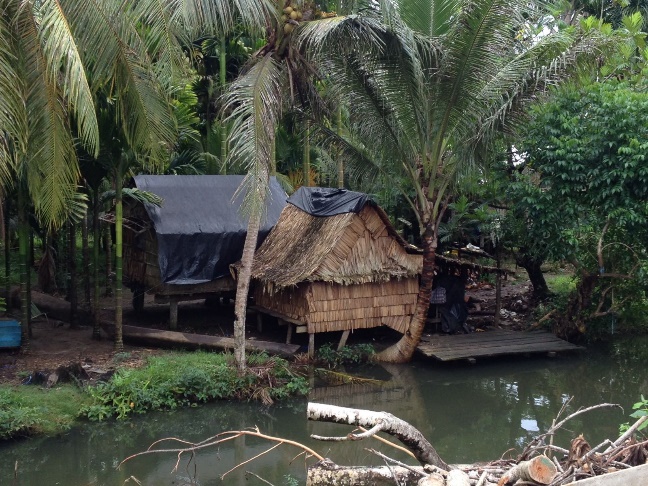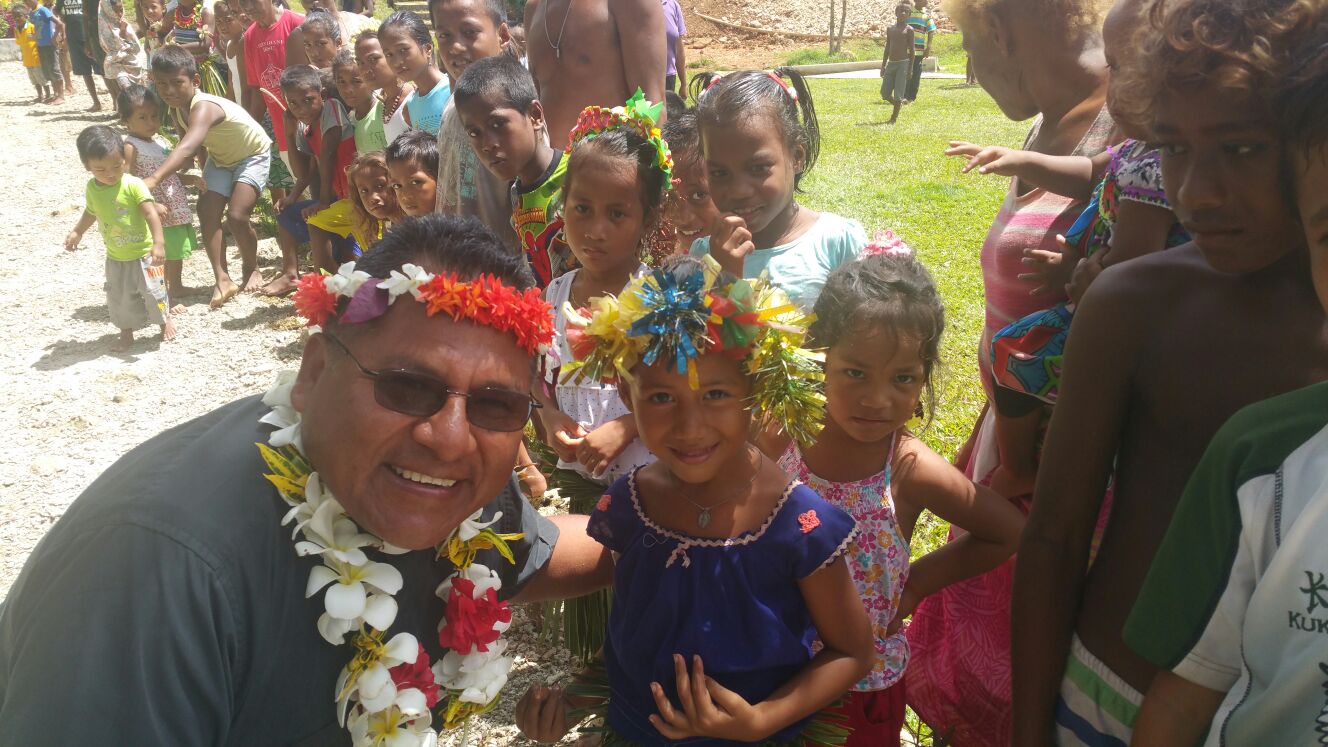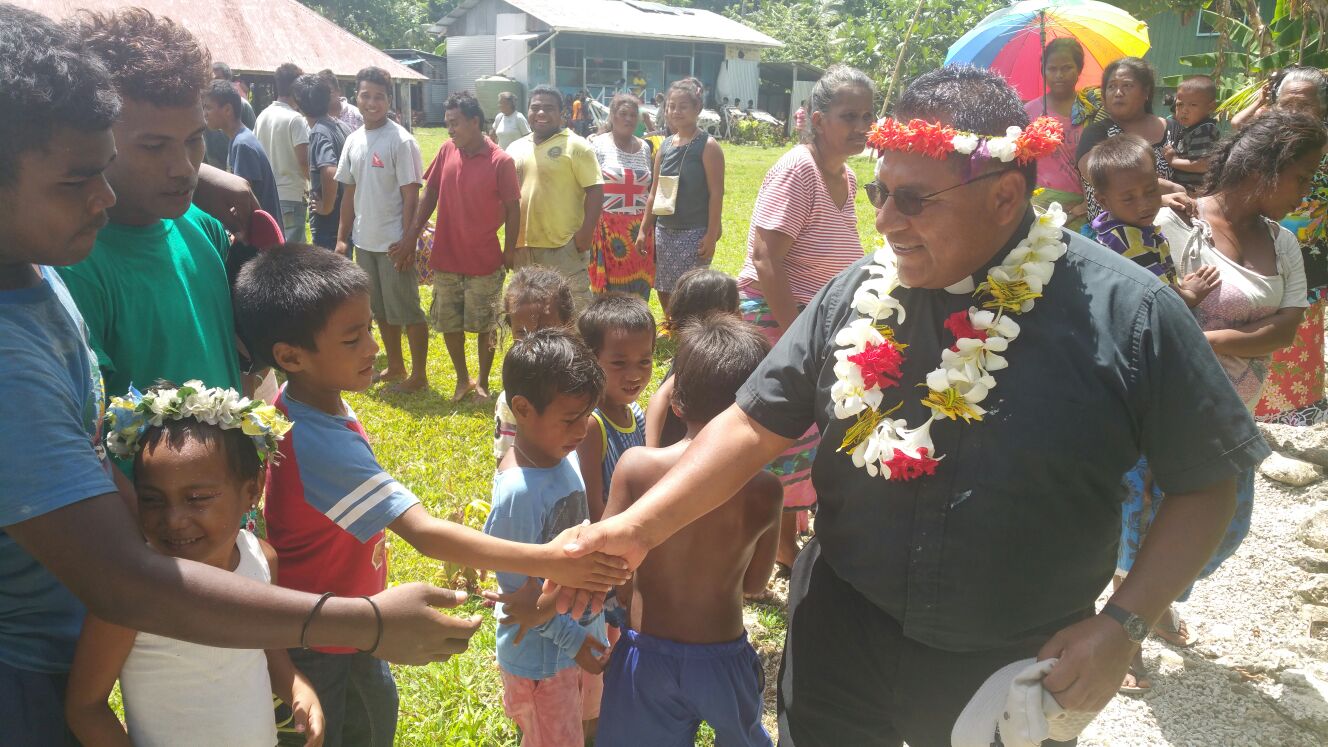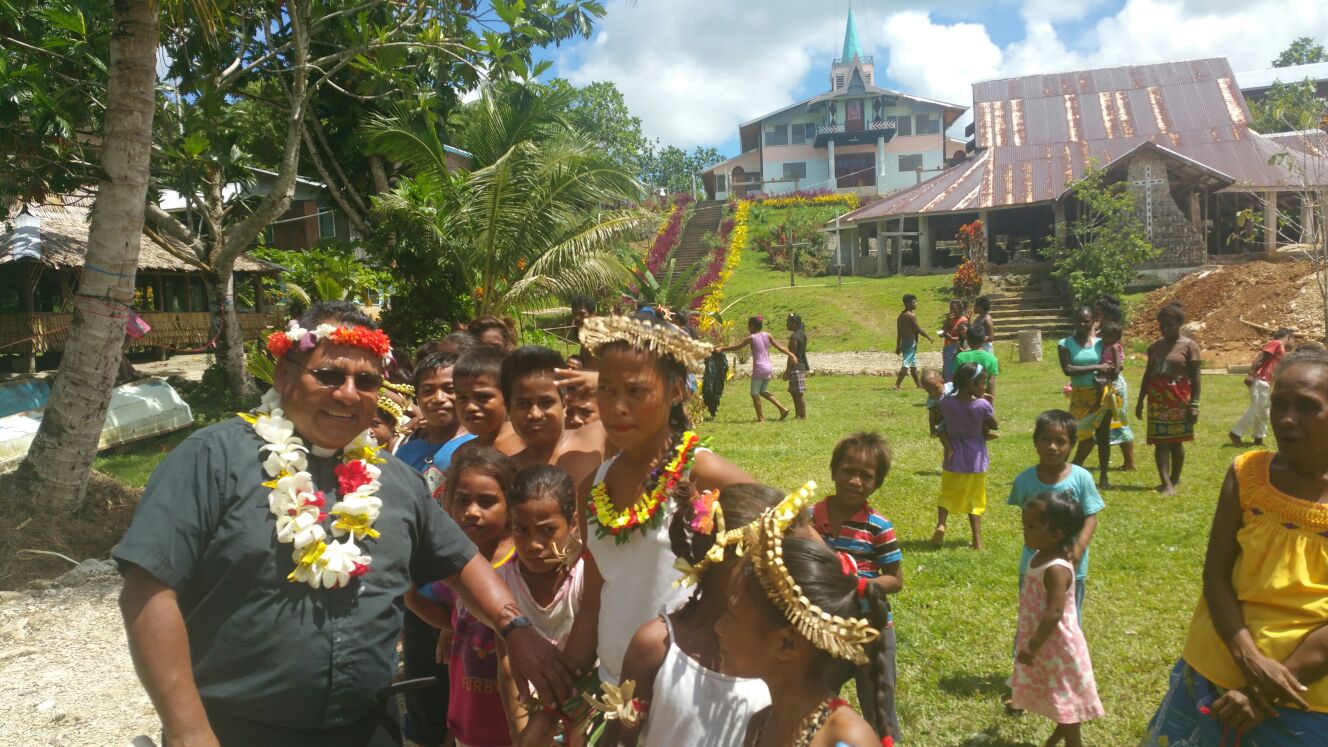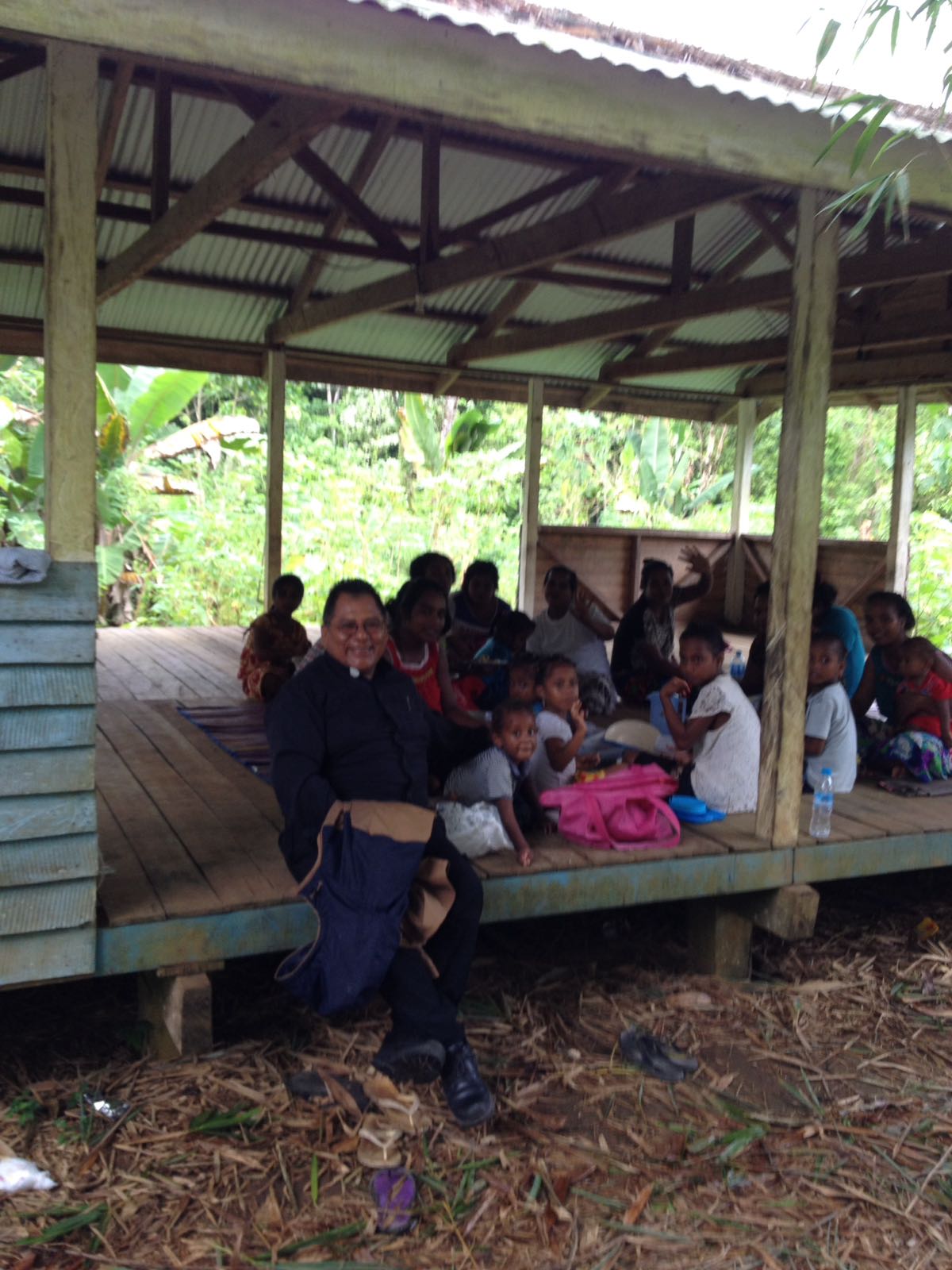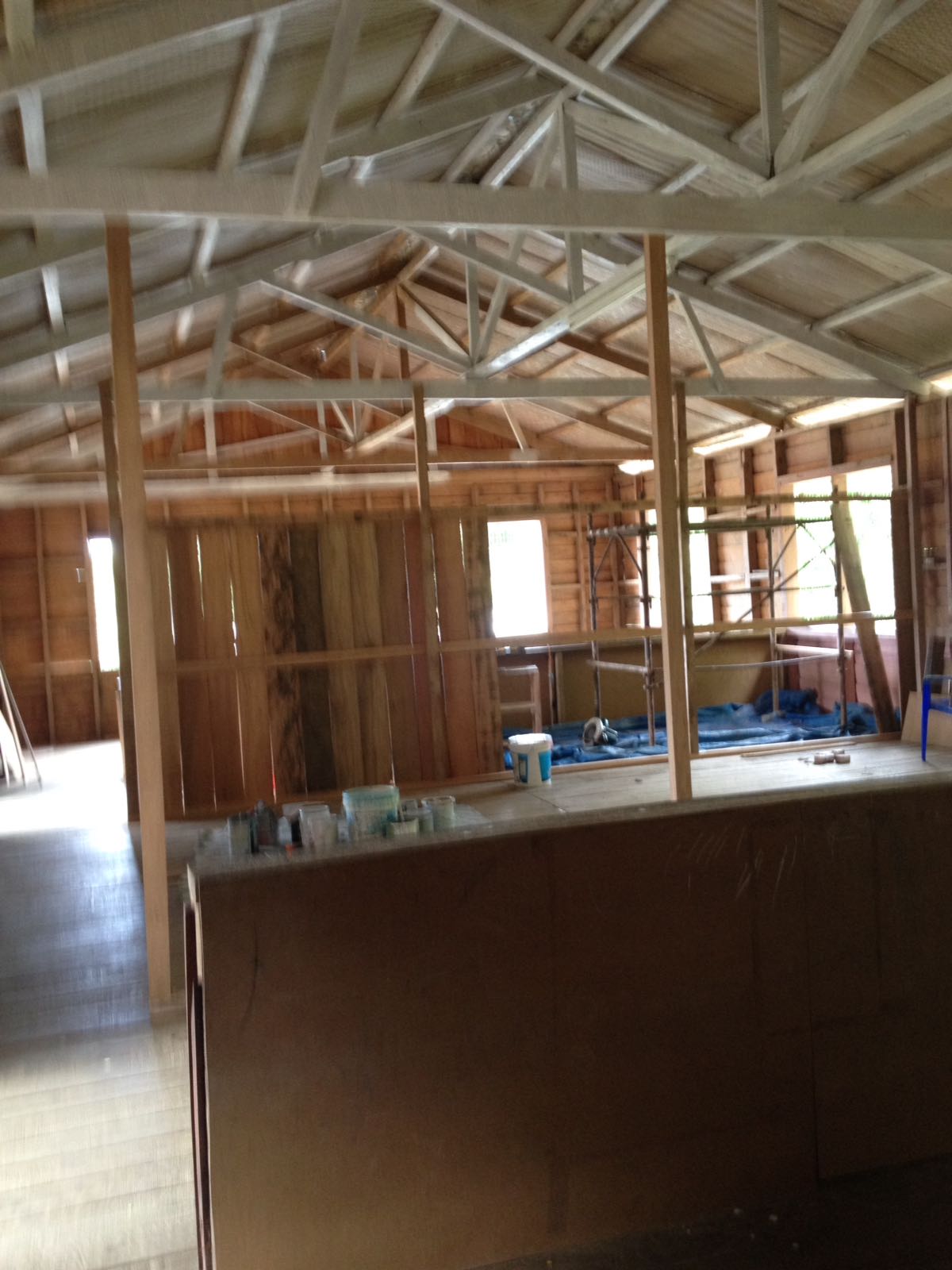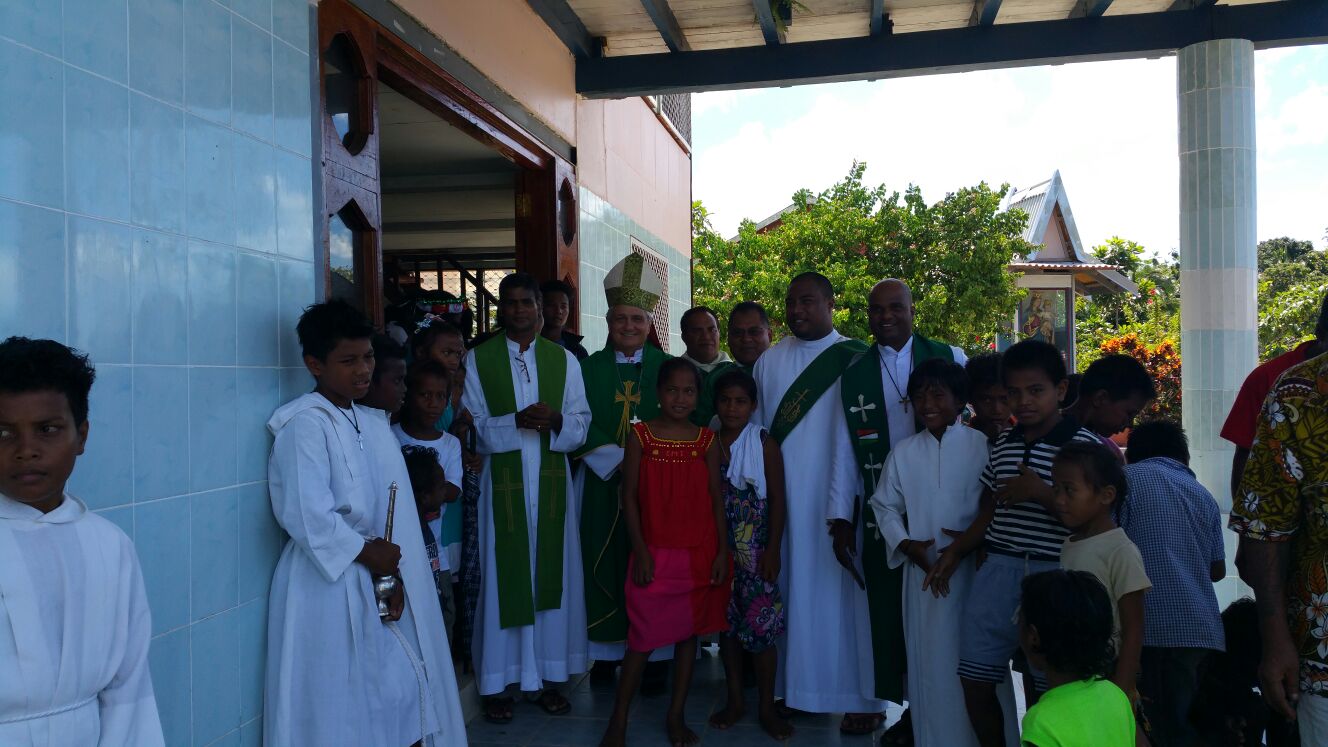The preparations prior
This project for the foundation in the Salomon Islands arrived during the General Chapter of 2016. I had the privilege of knowing about this project and of being invited to begin this new foundation, in October of 2016. Although the foundation was committed to around the end of May 2017, I still had to carry out my responsibilities in the diocese of Haarlem, in northern Holland. It wasn’t until November of 2017 that, after two years and three months in the mission in the city of Alkmaar with Fathers Diego Pildain and Tristán Pérez, my obligations were concluded; and having obtained the necessary documents, I could begin the trip toward my new assignment.
Before recounting about the foundation, I would like to take advantage to give a special thanks to our Bishop in northern Holland, Msgr. Joseph Punt, and the Auxiliary Bishop, Msgr. Johannes Hendricks, with whom I developed a very good priestly friendship. Both have always had the exquisite charity in assisting and supporting us in our pastoral work, in a very lay and liberal country, which is in need of returning to the fountain of truth, the Gospel.
While I was organizing matters in Holland, I began to communicate via e-mail with Msgr. Luciano Capelli, SDB, Bishop of the diocese of Gizo, in the southwestern Salomon Islands, who was orienting me in regard to the procedures for a traveler’s visa, which it turns out was not very easy. But what was the most surprising was that in every office, beyond the time, costs, trips, etc… the Dutch themselves were very surprised at my petition for the visa to go to a place so far away. With much admiration, they questioned me: “What? The Salomon Islands?… But where are these Islands?” or “We never had anyone come here to process documents to go there, so far…” or “Did you not like Holland?” “You are sure about what you are doing, renouncing your new address in Holland, the possibility of becoming a citizen in Holland, etc, etc, etc…?”
If these were the questionings of people who did not know me but only received my documents, you can imagine what this meant for my acquaintances and friends! They put strong, good and beautiful questions to me, but were too human, referring to my knowledge of the language, of finally being registered in the diocese and the Dutch state (this is something particularly difficult to obtain), to the wellbeing of the country, etc, etc, etc…
Nevertheless, by the grace of God, since I became a religious missionary I never made excuses for going or for asking for a particular mission. I would like to remember here what my grandmother, Carlota Quisver, told me when I left my city of Palpalá (in Jujuy, Argentina), at 17 years of age. In January, 1981, at the moment of my departure, she was very sick and I would never again return to see her, but her words remained etched in me, and I always went to the missions with this teaching which she often said… “To God praying, and with the hammer giving” [1].
In December of 1981 I met Fr. Lojoya and Fr. Buela, and in the following year I heard, for the first time, talk about the project of founding our beloved IVE; I was only 18 years old. Two years later we would found the Congregation and there I would hear that phrase of my grandma: “to God praying and with the hammer giving”. That was how it was from the first day, when we went to open the first centers for apostolate in San Rafael, in El Nihuil together with Marcelo Morsella, in the Brava Coast (today the spiritual center of Our Lady of Carmen), in El Usillal, in Las Vertientes, in Sutter, in El Toledano, in el Barrio Laredo (by the way, I consider it a very great grace of having begun the apostolate in this neighborhood, visiting the homes, working with the minor seminary and starting, together with Fr. Lucio Flores, the procession of St. Cajetan which is now so popular). Incidentally, I also had the grace of doing the first apostolate of the Institute in la Villa 25 de Mayo, in Capitán Montoya, the first Popular Mission in Matará (Santiago del Estero), and also the first Popular Mission outside of the country, in Limatambo (Peru), in 1987.
In retrospect, I can say with all sincerity that we have always been asked in a charitable and evangelical way to go to mission. That is why, with this maxim, every missionary mandate was, is, and will be very efficacious, and at the same time it will be a way of knowing what spirit moves us to go where God asks us to go: “Out of Charity we were asked and in Charity we have accepted it and set to work”, and that’s why we bear and will bear many fruits with the Grace of God and the Mother of the Word Incarnate. Since we have faith in the fact that if our superiors saw that it was good and necessary to do such, then this is the will of God for us, for which it is worthwhile to spend ourselves and be spent.
For this reason, never in my life did I consider it “a waste of time”, and all the less “being used”, as some have told me when I went to mission for ten years in Africa, in 2000, after having finished my Licentiate in Rome. Actually, I was in Sudan for eight years (during the war) and two hears in the hot dessert of Northern Kenya, near Ethiopia. I still remember that when I traveled to my first mission “ad gentes”, Sudan was suffering a terrible war between the north and the south of the country, which turned into a civil war in which we ran the risk of losing our lives. But the 950 baptisms that I was able to administer in those ten years, by the grace of God, speak for themselves and respond to all these cold and scheming questions.
“Why go so far”… “Why don’t they go?”… “Enough of the difficult places, that is an invented utopia, what is this, to call some missions emblematic?”… “Why do they send you?” “And sometimes alone”… etc, etc. I always have present the response of the Apostles at the invitation of Our Lord to “put out into the deep” or when He said to them: “the one who sets a hand to the plow and looks to what was left behind is not fit for the kingdom of God”. I remember that Fr. Lojoya(†) also liked to repeat this, and he told us this specially on the feast of St. Joseph, on March 19th 1984, as we were about to travel to San Rafael for the foundation of our beloved Institute. I also heard him say this to a good priest who was going to the Carthusians: “remember, he who unsheathes the sword cannot sheath it again until the battle is done”… Is this utopia?
Farewell to Argentina, San Rafael and Juyuy (Palpalá)
In December of 2017 I visited San Rafael and had the grace of concelebrating in the Ordinations and spending time with many missionaries. From there I went to my beloved Juyjuy, in order to say goodbye before returning to Northern Holland and then to my new assignment.
I had the grace of celebrating my 27th anniversary of ordination on December 8th. It was a good opportunity to bring to mind my silver anniversary to the Priesthood, celebrated in 2015, which I was not able to celebrate in Palpalá, where I grew up and studied until the third year of technical school. It was a great grace to be able to gather together with my family members and friends from childhood. Also, I had a reunion with my ex-classmates and celebrate 40 years since the graduation from the General Savio primary school in Jujuy. This city is now well known to us because of the popular missions of the IVE which are accomplished with much fruit. This year, for the first time, they are preaching the Spiritual Exercises of St. Ignatius there.
The immediate preparations and arrival to the mission
I returned to Holland from Argentina on December 12, 2017, along with my cousins and my niece, in order to make a pilgrimage with them to Rom and other places. I had the immense grace of praying at the tomb of St. John Paul II, and to ask him, and the Prince of the Apostles, St. Peter, that they would accompany me on the new missionary adventure that was unworthily entrusted to me to found.
The Salomon Islands, located in the Pacific Ocean, are very well known for the History of the “Battle of Guadalcanal”, in World War II. From Northern Holland it took me 42 hours of travel, including the layovers and luggage claim in each airport, with the usual fee for being overweight, connecting flights, etc. etc. The itinerary was the following: Amsterdam (Holland), Jakarta (Indonesia), Singapore… In Singapore again the whole shuffle of baggage, the wait and fee for overweight luggage… there I remembered St. Francis Xavier and the advice of Our Lord, not to bring anything along for the journey… and I began, with all the pain of my soul, to detach myself of the precious goods that I dragged along with me since my studies in Rome and which I had with me in my suitcase for 10 years in Africa!
From Singapore to Port Moresby (Papua New Guinea), from there to Honiara, the capital of the Salomon Islands… Due to the time change, I had to sleep two nights in flight on two airplanes… when I landed in Honiara on January 5th… really, this unwise Indian, hadn’t the least idea of how or where I had arrived… and still I hadn’t arrived at the Island of Gizo, where I just recently arrived on January 9th (from Honiara to the Island of Gizo it is a two hour flight, although it can be done by boat, this would have implied 24 hours in the middle of the ocean…).
Once more, surprises awaited me. Upon arriving at my destination, I discovered that I still had to navigate INTO THE DEEP five hours more, or fly in a tiny two-passenger plane 40 minutes, in order to arrive at the Islands of Guagina or Wuagina, which are located near the large island of Choiseul… From the air, this island, which is now completely ours to evangelize, looks like a leaf floating in a great lake. I finally arrived on January 13th; in total: 10 days and 6 planes, believe it or not!
Dear fathers, seminarians, sisters, families of the Third Order and other friends: this introduction to the new foundation in the middle of the Pacific, on the Salomon Islands, in the diocese of Gizo, the Mission of Guagina… in the Province of Choiseul, is for you. I am in the middle of a group of I-KIRIBATI immigrants, from the Kiribati Islands (to my surprise, the I-Kiribati are very similar to the people of Juyjuy!). They founded on this Island, in the middle of the Ocean. They live isolated from everything and everyone, and so I must learn two languages, Pidgin and Kiribati: English is seldom used.
The arrival to Honiara, the encounter with the present Archbishop of Honiara and with the Archbishop Emeritus, and the Salesian mission of Tetere which showed me hospitality before my flight to Gizo, I shall leave aside for the next chapter of this chronicle. I also promise to tell of the last transit by the tiny plane from Gizo to Wauagina, how Msgr. Capelli, the Bishop, was co-pilot… until a certain moment when, to the bishop’s surprise, I myself piloted for 20 minutes in order to arrive at the very mission from where I am writing this chronicle.
In Jesus and Mary, Mother of the Word Incarnate, greetings to all from the Salomon Islands which are in such need of adventurers for God and his Holy Mother.
From the Blue Pacific’s thousands and thousands of islands,
Fr. Rubén Ángel (Coya) Quisver, IVE.
[1] Editor’s note: “A Dios rogando, con la maza dando”. Meaning: When we desire something it is good to commend it to God, to Providence, but at the same time do all that is within our power in order to obtain what we seek. (cf. Centro Virtual Cervantes, https: //cvc.cervantes.es)


